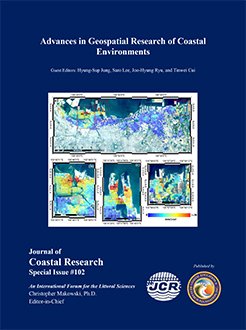Lee, S.M.; Lee, E.J.; Yoo, H.S., and Lee, M.J., 2020. Analysis of trends in marine water quality using environmental impact assessment monitoring data: a case study of Busan new port. In: Jung, H.-S.; Lee, S.; Ryu, J.-H., and Cui, T. (eds.), Advances in Geospatial Research of Coastal Environments. Journal of Coastal Research, Special Issue No. 102, pp. 39-46. Coconut Creek (Florida), ISSN 0749-0208.
Various development projects, including harbor construction, are carried out in coastal areas. In South Korea, the performance of environmental impact assessment (EIA) is legally required for development projects in marine areas to monitor the impacts of these projects on offshore marine environments. National Marine Environmental Measurement Network (NMEMN) data can be used to examine the overall status of the marine environment prior to a development project, but these data are very limited. In contrast, EIA data are collected from a large number of locations over various periods. The purpose of this study was to analyze trends in the coastal marine environment using NMEMN and EIA data collected in 2010–2011 for Busan New Port, where multiple development projects are underway. Use of the combined dataset enabled more effective analysis of trends in marine water quality, including those in dissolved oxygen, the chemical oxygen demand (COD), total nitrogen (TN), and total phosphorus (TP), than did the use of NMEMN data alone. Values increased in the bottom layer, especially in the summer, after port operation had begun. For example, average summer ranges for COD, TN, and TP in the bottom layer in 2000–2005 were 1.41–2.2 mg/L, 0–0 µg/L, and 0–17.62 µg/L, respectively, and those in 2006–2011 were 1.53–3.2 mg/L, 0–281 µg/L, and 8.09–49.35 µg/L, respectively. In the future, data from various sources should be integrated into EIAs to identify not only the impacts of a single project, but also the overall impacts of multiple changes in an area. This method also could be used to provide basic data for continuous management of the marine environment.





